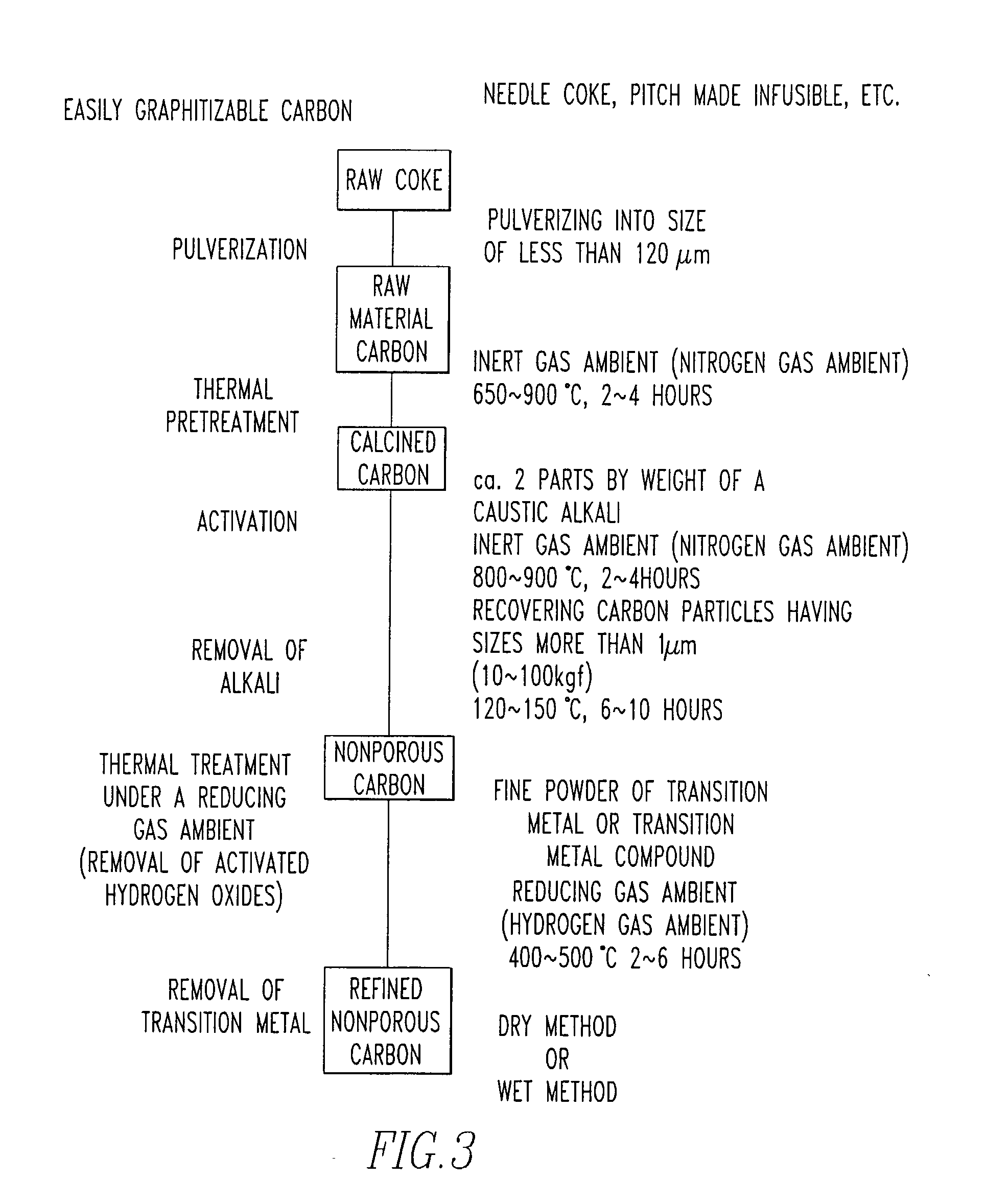Method of removing residual active oxy-hydrogens
a technology of active oxyhydrogens and residual functional groups, applied in the field of carbon materials, can solve the problems of residual functional groups, reducing service life, and producing other problems
- Summary
- Abstract
- Description
- Claims
- Application Information
AI Technical Summary
Problems solved by technology
Method used
Image
Examples
experimental example 4
[0113] Experimental Example 4
[0114] Nonporous carbon A was processed using Fe (4711 having a purity of 99.5% and 325 mesh (smaller than 13 .mu.m), produced by Moritex Corporation, Japan) instead of the transition metal Co used in Experimental Example 1. Thus, refined carbon materials were obtained. The amounts of active oxy-hydrogens (short and moderate relaxation time components) in each obtained carbon were measured by pulsed NMR in the same way as in Experimental Example 1. Furthermore, capacitors were assembled using the obtained, refined carbon materials as materials for activating the carbons. Their charge-discharge characteristics were evaluated. The obtained results are shown in FIGS. 10(a)-10(c) and in Tables 1 and 2.
experimental example 5
[0115] Experimental Example 5
[0116] The nonporous carbon A was processed using Ni (having a purity of better than 99.0% and grain diameters of 3 to 7 .mu.m, produced by Kanto Kagaku, Japan) instead of the transition metal Co used in Experimental Example 1. In this manner, refined carbon materials were obtained. The amounts of active oxy-hydrogens (short and moderate relaxation time components) in each obtained carbon were measured by pulsed NMR in the same way as in Experimental Example 1. Furthermore, capacitors were assembled using the obtained, refined carbon materials as materials for activating the carbons. Their charge-discharge characteristics were evaluated. The obtained results are shown in FIGS. 11(a)-11(c) and in Tables 1 and 2.
experimental example 6
[0117] Experimental Example 6
[0118] Processing was carried out similarly to Experimental Example 1 except that the processing temperature was changed to 300.degree. C. In this way, refined carbon materials were derived. The amounts of active oxy-hydrogens (short and moderate relaxation time components) in each obtained carbon were measured by pulsed NMR in the same way as in Experimental Example 1. Furthermore, capacitors were assembled using the obtained, refined carbon materials as materials for activating the carbons. Their charge-discharge characteristics were evaluated. The obtained results are shown in FIGS. 12(a)-12(c) and in Tables 1 and 2.
PUM
 Login to View More
Login to View More Abstract
Description
Claims
Application Information
 Login to View More
Login to View More - R&D
- Intellectual Property
- Life Sciences
- Materials
- Tech Scout
- Unparalleled Data Quality
- Higher Quality Content
- 60% Fewer Hallucinations
Browse by: Latest US Patents, China's latest patents, Technical Efficacy Thesaurus, Application Domain, Technology Topic, Popular Technical Reports.
© 2025 PatSnap. All rights reserved.Legal|Privacy policy|Modern Slavery Act Transparency Statement|Sitemap|About US| Contact US: help@patsnap.com



